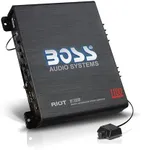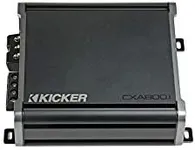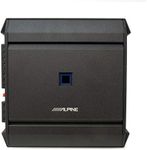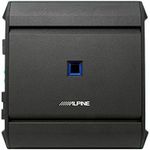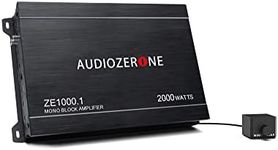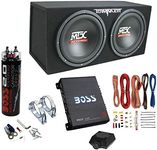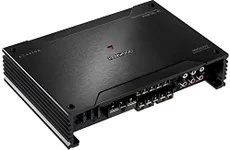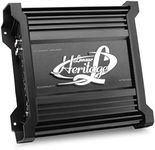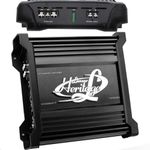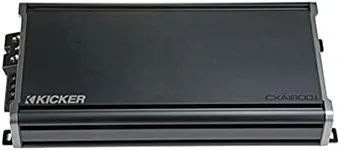Buying Guide for the Best Car Amplifiers
Choosing the right car amplifier can significantly enhance your in-car audio experience. An amplifier boosts the audio signal, providing more power to your speakers and resulting in clearer, louder, and more dynamic sound. To find the best amplifier for your needs, it's important to understand the key specifications and how they relate to your audio preferences and system setup.Power Output (RMS)Power output, measured in watts RMS (Root Mean Square), indicates the continuous power the amplifier can deliver to your speakers. This spec is crucial because it determines how loud and clear your music will sound. Amplifiers with higher RMS power can drive more powerful speakers and produce louder sound without distortion. For casual listeners, an amplifier with 50-100 watts RMS per channel is usually sufficient. For those seeking high-performance audio, look for amplifiers with 100-200 watts RMS per channel or more. Match the amplifier's RMS power to your speakers' RMS rating for optimal performance.
Number of ChannelsThe number of channels on an amplifier refers to how many speakers it can power. This is important because it determines the configuration of your audio system. A mono (1-channel) amplifier is typically used for a subwoofer, while a 2-channel amplifier can power two speakers or be bridged to power a single subwoofer. A 4-channel amplifier is ideal for powering four speakers, and a 5-channel amplifier can power four speakers plus a subwoofer. Choose the number of channels based on the number of speakers and subwoofers in your car audio system.
Signal-to-Noise Ratio (SNR)The signal-to-noise ratio (SNR) measures the clarity of the audio signal, expressed in decibels (dB). A higher SNR means less background noise and clearer sound. This spec is important for ensuring high-quality audio reproduction. An SNR of 90 dB or higher is considered good, with higher values indicating better performance. If you are an audiophile or want the best possible sound quality, look for amplifiers with an SNR of 100 dB or higher.
Total Harmonic Distortion (THD)Total Harmonic Distortion (THD) measures the amount of distortion an amplifier introduces to the audio signal, expressed as a percentage. Lower THD values indicate cleaner sound. This spec is important for maintaining audio fidelity. A THD of 1% or lower is generally acceptable for most listeners, but for high-fidelity audio, look for amplifiers with a THD of 0.1% or lower. If you prioritize sound quality, choose an amplifier with the lowest possible THD.
Impedance CompatibilityImpedance, measured in ohms, refers to the resistance the amplifier will face from the speakers. This spec is important because it affects the power delivery and compatibility between the amplifier and speakers. Most car amplifiers are designed to work with 4-ohm speakers, but some can handle 2-ohm or even 1-ohm loads. Ensure that the amplifier's impedance rating matches your speakers' impedance to avoid damage and ensure optimal performance. If you have 4-ohm speakers, choose an amplifier rated for 4 ohms; if you have 2-ohm speakers, choose an amplifier that can handle 2 ohms.
Crossover ControlsCrossover controls allow you to direct specific frequency ranges to different speakers, such as sending low frequencies to a subwoofer and high frequencies to tweeters. This spec is important for optimizing the performance of your audio system. Built-in crossovers can be high-pass, low-pass, or band-pass, and they help ensure that each speaker receives the appropriate frequencies. If you have a subwoofer and component speakers, look for an amplifier with adjustable crossover controls to fine-tune your sound system.
Size and InstallationThe physical size of the amplifier and its installation requirements are important considerations, especially if you have limited space in your vehicle. This spec is important for ensuring that the amplifier fits in your desired location and can be installed properly. Measure the available space in your car and compare it to the dimensions of the amplifier. Also, consider the installation process and whether you need professional help. Choose an amplifier that fits comfortably in your vehicle and can be installed without major modifications.

